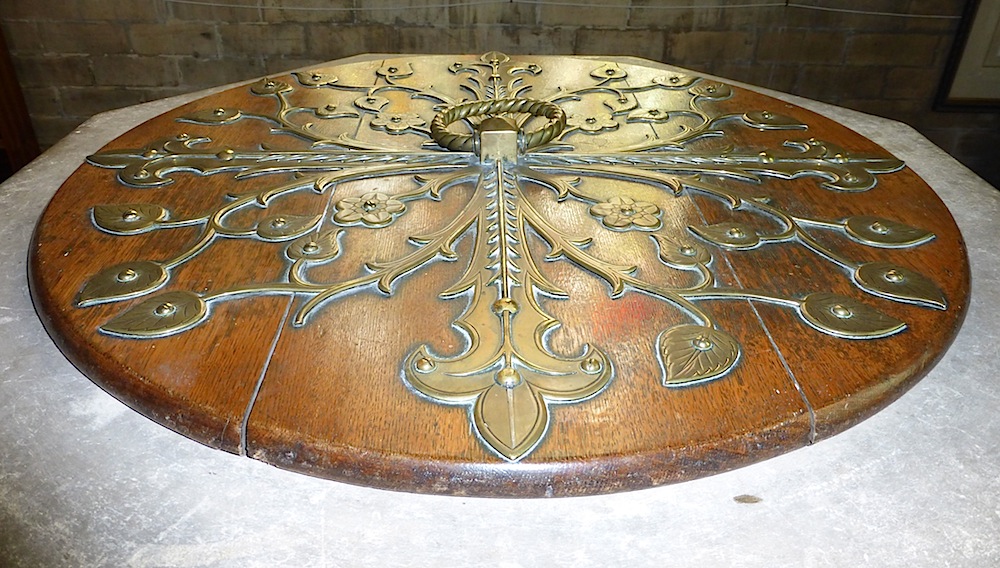Photographs by the author. [You may use these images without prior permission for any scholarly or educational purpose as long as you (1) credit the photographer and (2) link your document to this URL in a web document or cite it in a print one. Click on the thumbnails for larger images.]

Holy Trinity from Mostyn Street.
Holy Trinity, Trinity Square, Llandudno, N. Wales, by George Felton. Grade II listed, it was built from 1865 and consecrated in 1874. The land was given by the Mostyn Estate: the cornerstone was laid by Lady Augusta Mostyn [click here for cornerstone]; Felton was the architect for the Mostyn estate. He was responsible for much of the development of LLandudno, which became the most popular seaside resort in Wales during the mid- to late-Victorian period. The large rubblestone church with its transepts and an apsed chancel has been described as well-situated but "ungainly," but it is not as Felton originally designed it. The tower was added in 1892 by Edwin Turner, and the chancel altered in 1932 by R. T. Beckett (Haslam et al. 409). Built to accommodate the tourists who flocked into Llandudno in the summer, it could seat congregation of 1200.

Nave, looking east.
The interior brickwork is yellow, attractively banded in black, and the Bath stone arcades have grey columns of Anglesey marble, with richly carved capitals. There is some Minton tiling (see Haslam et al. 409).


Looking into the apse. Left: Looking past the choir stalls. Right: Towards the far right.
The elegantly carved stalls, of 1882, are by the big Birmingham firm of church decorators Jones & Willis (see Haslam 410). Light streams in through the apse windows, a series of five in memory of the Thursby family. They follow a narrative sequence, depicting the birth, childhood and boyhood of Jesus: the nativity, the coming of the Magi, the presentation in the Temple, Jesus teaching in the Temple, and Jesus in the carpenter's shop. By Hardman & Co., these are among the chief glories of the church.



Left to right: (a) Densely carved capital. (b) Font. (c) Font lid with elaborate metalwork.
Some of the fittings are of a later date (for example, the pulpit dates from 1951) but the font with its grey marble columns matching those in the arcades, and elaborate ironwork on its lid, is perhaps original. The window behind it, showing Christ's baptism by John the Baptist, and later blessing little children, is signed A. L. Moore, dated 1887.

Nave, looking west.
High above is the "new" west window, which came from St Augustine's, Cheadle Heath, Stockport, a church that had closed. It shows the Annunciation and the coming of the Magi, and was dedicated here only in May 2013.

Selection of Stained Glass in the Church
- Hardman's Nativity window, in the apse
- Hardman's Coming of the Magi and Shepherds, in the apse
- A. L. Moore's Baptistry widow
- North transept window, Christ in Majesty (detail show on the right here)
- West window (Annunciation and the Coming of the Magi)
- Geometric and floral window
Sources
"Church of the Holy Trinity...." British Listed Buildings. Web. 8 November 2015.
Haslam, Richard, Julian Orbach and Adam Voelcker. Gwynedd. The Buildings of Wales series. New Haven and London: Yale University Press, 2009.
"Holy Trinity Church." Parish of Llandudno. Web. 8 November 2015.
Created 8 November 2015